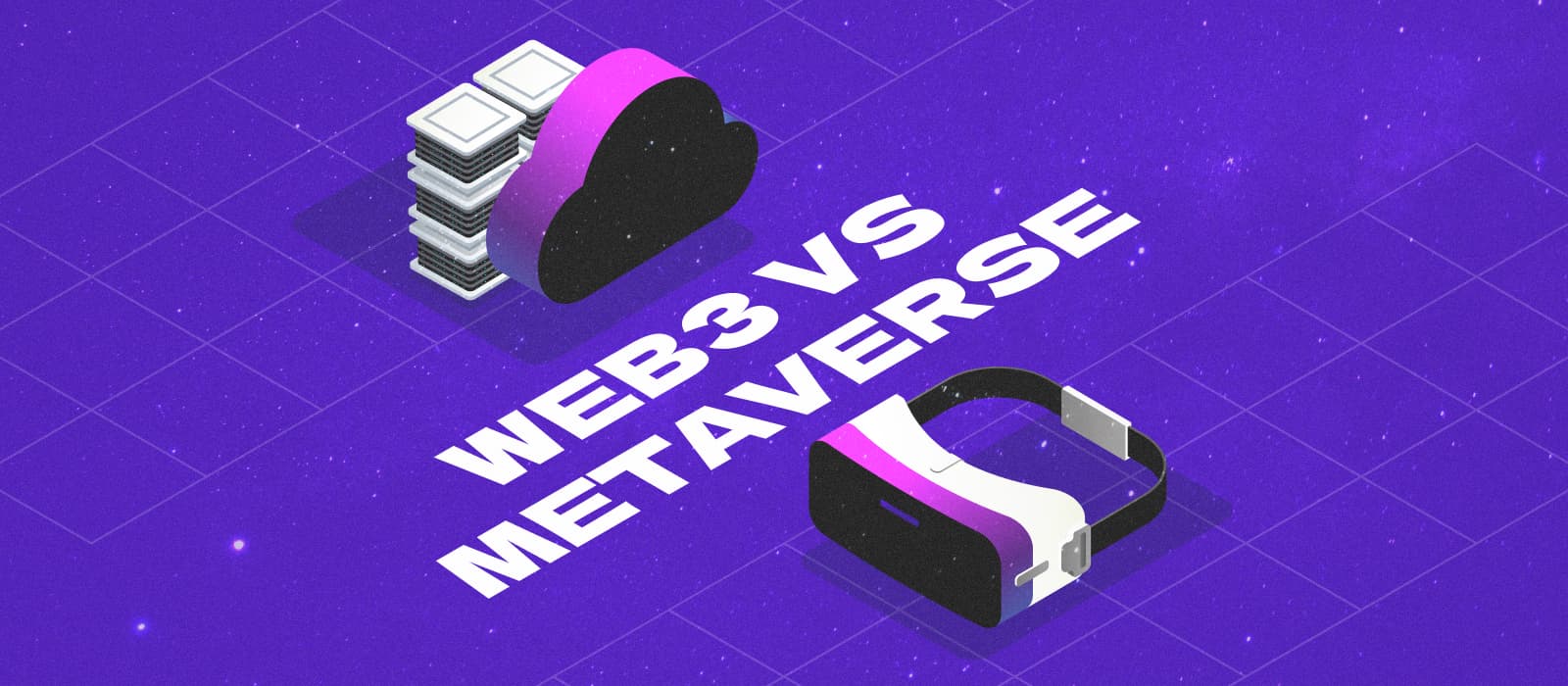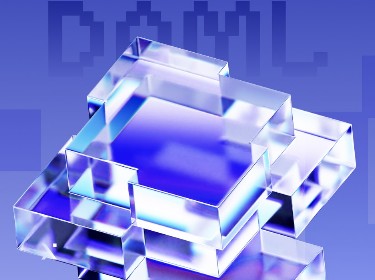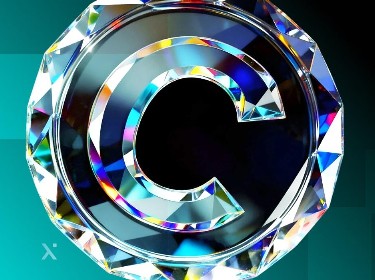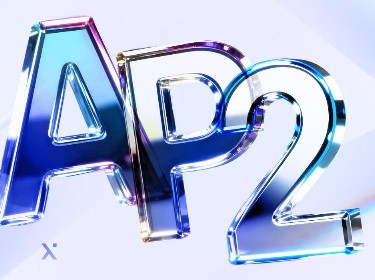As the digital landscape continues to evolve, web3 and metaverse concepts have emerged as transformative forces, reshaping our virtual existence and experience while introducing new opportunities. But what do the two concepts have in common and how do they differ from each other?
Web3 and the metaverse are rightly regarded as technologies that will exert a substantial impact on our future.
By 2030, the global web3 blockchain market is projected to hit $52.89 billion while the global metaverse market size is poised to soar to a staggering $936.57 billion. These impressive statistics vividly depict the transformative potential lying within these interconnected realms and demonstrate that both are set to continue building momentum in the years to come.
Still and all, many people remain unaware of the exact differences and similarities between web3 vs metaverse as well as find it difficult to get to grips with how the two concepts can complement each other.
If you find yourself in this category, then rest assured that we have you covered.
In this article, we will delve into the key distinctions and core parallels between web3 and the metaverse, and shed light on their unique attributes.
Let’s start!
What is web3?
Web3, or Web 3.0, is commonly referred to as the third generation of the internet that is striving to become more intelligent, user-centric, transparent, open, and autonomous compared to its predecessors, web1 and web2. It is also set to provide web users with greater control over their data, assets, and digital identity, empowering them to selectively share their personal information and execute secure peer-to-peer transactions without relying on any intermediaries.
To achieve its vision and objectives, today’s web3 is predominantly reliant on blockchain technology and other cutting-edge tools such as cryptocurrencies, smart contracts, decentralized storage systems, distributed computing platforms, interoperability protocols, decentralized identifiers (DIDs), and verifiable credentials (VCs).
Explore our detailed web3 guide that provides in-depth insights and knowledge about the core features and capabilities of this groundbreaking tech
What is the metaverse?
The metaverse is a connected network consisting of 3D virtual worlds that are rendered in real time and can be accessed via specialized AR/VR hardware, smartphones, and other digital interfaces. Apart from AR/VR, the metaverse leverages additional sophisticated tools and tech such as mixed reality, blockchain, artificial intelligence, cloud computing, and 5G. These technologies enable seamless interaction, real-time collaboration, and lifelike simulations, creating immersive experiences that bridge the digital and physical worlds. As the metaverse evolves, AI-driven content generation and intelligent avatars further enhance user engagement by personalizing experiences and automating complex tasks. AI development services are instrumental in powering these capabilities, providing the algorithms and tools needed to create dynamic and adaptive virtual environments.
At its core, the metaverse aims to enable users to socialize, work, study, play, shop, hang out with friends, and visit different virtual events, conferences, and concerts — all within an immersive computer-generated universe.
The metaverse concept also envisions its own economies, ecosystems, and social structures that users can engage with. By embracing these elements, users stand to enhance their overall experience within the metaverse, immersing themselves in a dynamic and interconnected virtual realm full of previously unseen opportunities.
Take a moment to explore this article and gain valuable insights into the metaverse and its key features
What are the similarities between web3 and the metaverse?
![]()
Based on the definitions provided earlier, it is evident that the metaverse and web3 represent quite different notions. Yet there are certain aspects and ideas that the two share in common. These include features such as decentralization, a user-centric approach, the introduction of new economic opportunities, an interoperability capacity as well as openness and innovation.
Let’s explore each of these similarities in greater detail.
Decentralization
Both web3 and the metaverse strive to establish a high level of decentralization within their respective realms, empowering their users with greater autonomy and independence in digital dimensions.
Web 3.0 aims to decentralize the internet and enable simplified peer-to-peer transactions without involving centralized authorities.
The metaverse, for its part, can be either centralized, meaning that it is run by a single entity, or decentralized — run by community users, depending on the project’s needs and requirements. In its decentralized form, it facilitates a decentralized virtual environment independent of centralized control where users can establish complete ownership over their virtual assets and identities.
User-centric approach
The metaverse and web3 are practicing a very user-centric approach, granting users more control and agency over their personal data, identities, creations, experiences, and assets. What’s more, both of them are strongly advocating for user sovereignty and delegating power to users, highlighting the significance of user rights, privacy, and inclusivity in the digital landscape.
New economic opportunities
Web3 and the metaverse come with unique economic opportunities and create new revenue streams.
In the realm of web3, innovative economic models are fueled by concepts such as Decentralized Finance (DeFi) and NFT token development, both of which facilitate groundbreaking forms of investment and transactions, revolutionizing traditional financial systems.
Similarly, the metaverse paves the way for virtual commerce and virtual property ownership enabling users to trade, buy, sell, and invest in virtual goods and services, which opens up avenues for greater economic engagement and investment in the virtual realm.
Interoperability
Interoperability is another fundamental aspect that both the metaverse and web3 are striving to preserve within their domains.
Web3 aims to deliver a seamless experience, allowing its users to interact with different decentralized applications and services across multiple blockchain platforms.
As for the metaverse, it also grants an interoperable environment where users can easily navigate diverse virtual worlds and platforms and interact with their virtual assets.
Openness & innovation
Web3 and the metaverse enthusiastically promote the concept of open cooperation and innovation. They actively encourage participation in ongoing advances and advocate for the broader adoption of open-source technologies and standards. This inclusive approach empowers developers to contribute and fosters collaboration and knowledge-sharing among like-minded pros.
Web3 vs metaverse: what are the differences?
![]()
Although web3 and the metaverse are clearly alike in certain aspects, they are nonetheless distinct concepts with notable differences. In the following section, we will explore the most notable parallels between these two technologies, while also highlighting their contrasting characteristics.
Main target
One of the most obvious differences between the metaverse vs web3 is their underlying philosophy and main target.
Web3 is the next evolution of web development services, aiming to create an open, user-centric web experience that prioritizes data privacy, user control, and enables transparent peer-to-peer transactions. This new phase of the internet focuses on decentralization, allowing developers to build applications that give users more control and ownership over their data.
The metaverse, on the other hand, is a virtual universe of interconnected 3D digital environments that goes beyond traditional web experiences. Its core idea is to blur the boundaries between physical and digital realms and provide users with a fully immersive and interactive experience.
Technology focus
The prime goals of the two concepts predefine their specific toolboxes.
As web3 is striving to introduce a censorship-resistant infrastructure and foster greater security and transparency of online interactions, it is primarily reliant on decentralized technologies such as blockchain as well as their components such as smart contracts and cryptographic protocols.
As far as the metaverse is concerned, it heavily leverages immersive technologies like virtual reality, augmented reality, and spatial computing to produce an interactive and realistic virtual environment through the expert smart contact development services.
Use cases & spheres of application
While web3 excels in facilitating secure global P2P payments and promoting a more democratic online environment, its potential extends beyond these areas. Among the most prominent web3 use cases, namely spheres and aspects where web3 demonstrates its full potential, are the creator economy, blockchain-powered gaming (GameFi), decentralized science (DeSci), as well as decentralized storage, browsers, and streaming platforms.
Meanwhile, the metaverse offers a range of exciting use cases across multiple domains, including gaming and entertainment, virtual events and conferences, virtual commerce, tourism and exploring activities, virtual collaboration and workspaces, plus education and training.
To bring these types of immersive gaming and interactive worlds to life, many brands collaborate with a specialized web3 game development company capable of integrating on-chain assets and secure wallet-based mechanics.
User experiences
Web3 and the metaverse embody distinct facets of the future internet, offering contrasting user experiences.
Web3 primarily zeroes in on the future governance and regulation of the internet, simultaneously addressing the question of who exactly will have control over it, i.e. whether it will be tech juggernauts or individuals seeking greater empowerment.
In contrast, the metaverse is focused on redefining how users will interact with the internet and providing a smooth virtual reality experience where people will be able to effortlessly navigate digital domains through their customizable avatars.
Stakeholders & ownership
Another significant distinction between web3 vs the metaverse relates to their stakeholders and ownership dynamics.
Web3 aims to revolutionize the internet, turning it into a public asset governed by a decentralized peer-to-peer network. The metaverse, meanwhile, is currently being influenced and molded by prominent tech giants like Meta.
This crucial difference highlights the contrasting visions of ownership and control, with web3 placing more focus on collective governance and the metaverse being subject to the influence of powerful corporations.
How can web3 and the metaverse complement each other?
The convergence of the metaverse and web3 can provide businesses and users with many more exciting opportunities in the future as the two concepts can perfectly coexist and complement each other.
So, the metaverse is responsible for delivering a dynamic and immersive digital space for seamless connectivity, cooperation, virtual commerce, and real estate ownership. Web3, for its part, represents a decentralized internet and grants users more control over their assets while also facilitating secure P2P transactions. By bringing the two technologies together, we will enjoy a thriving economy within the metaverse while benefiting from decentralized and transparent financial systems that fully align with web3 principles.
To illustrate the potential synergy between web3 and the metaverse, let’s consider an example. Metaverse users who own virtual properties like virtual plots of land or buildings, can opt to leverage the advances of web3 and blockchain to tokenize their assets. This will help boost the liquidity of their assets, attract a wider investment pool, and allow for inclusive investment options.
In addition to this, investors can gather together in the metaverse space and organize business meetings there, irrespective of their physical location. They can discuss deal details and even walk around the real estate property they are considering to invest in, exploring it virtually.
What does the future of the metaverse and web3 look like?
As we rapidly approach a new digital reality, both web3 and the metaverse will continue to evolve further, reshaping our existence, communication, and asset ownership. The ongoing advancements in these technologies promise to bring forth even more astonishing developments, leaving us in awe of what the future holds.
To embark on a meaningful and prosperous journey into web3 and the metaverse, businesses will be in a much stronger position if they partner up with knowledgeable metaverse development experts and web3 development services.
We at PixelPlex specialize in empowering organizations to successfully leverage and implement web3 and the metaverse in their workflows. From tokenomics consulting to augmented and virtual reality development, we help businesses deliver interactive and immersive experiences.
Discover how you can thrive in this decentralized and immersive future by contacting us today. Embrace the transformative power of web3 and the metaverse as the next chapter of the digital revolution is waiting for you.




